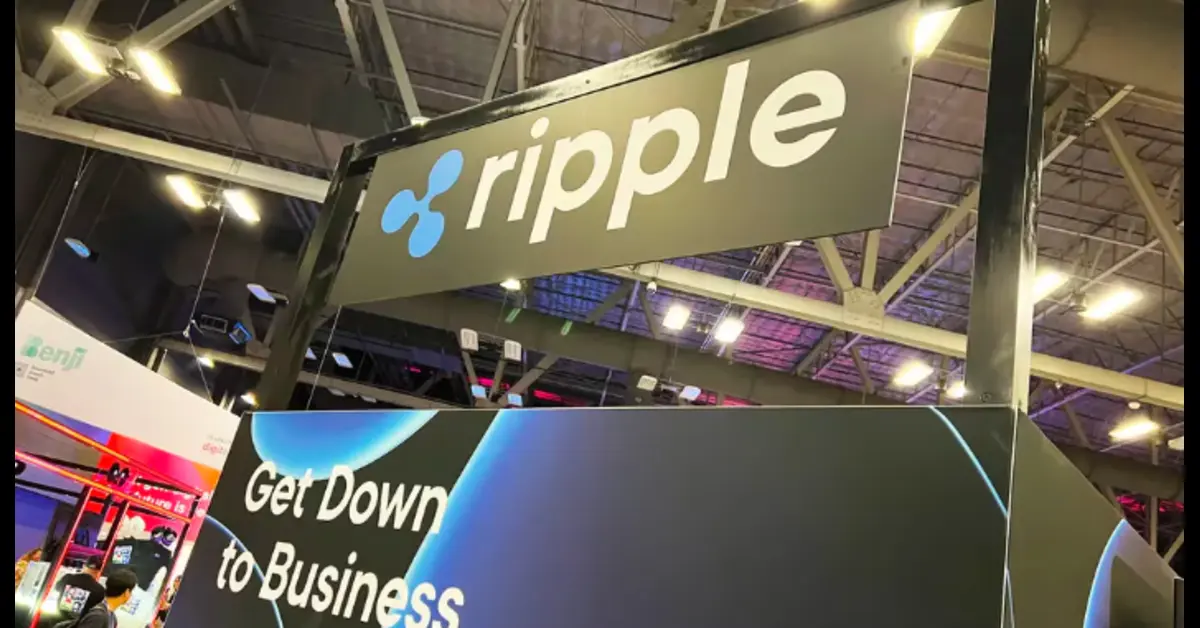Table of Contents
The world of digital finance is witnessing a groundbreaking development as Ripple, a prominent player in the blockchain industry, has initiated testing of its stablecoin across the Ethereum network and its own XRP Ledger. This move is poised to further Ripple’s ambition of bridging the gap between traditional financial systems and decentralized technologies, potentially reshaping the landscape of cross-border payments and blockchain interoperability.
Ripple’s Strategic Move into Stablecoins
Stablecoins have garnered significant attention in recent years for their ability to maintain a stable value, typically pegged to a fiat currency like the US dollar. Ripple’s venture into the stablecoin arena is a natural progression of its mission to provide fast, low-cost cross-border payments. By leveraging both the Ethereum network and its own XRP Ledger, Ripple aims to harness the strengths of both ecosystems, offering a stablecoin that is versatile, secure, and highly efficient.
Why Ethereum and XRP Ledger?
The choice to test Ripple’s stablecoin on both Ethereum and the XRP Ledger is strategic. Ethereum, the world’s leading smart contract platform, offers extensive developer resources and a vast ecosystem of decentralized applications (dApps). By integrating with Ethereum, Ripple can tap into a broad user base and facilitate seamless interactions with existing DeFi (Decentralized Finance) protocols.
On the other hand, the XRP Ledger is known for its speed and cost-effectiveness, characteristics that are crucial for a stablecoin intended to be used in high-frequency, cross-border transactions. The XRP Ledger’s consensus algorithm, which is less resource-intensive than Ethereum’s Proof of Work (PoW) model, allows for faster transaction processing times and lower fees, making it an ideal platform for a stablecoin.
Implications for Cross-Border Payments
Ripple has long been at the forefront of cross-border payment solutions, primarily through its use of XRP as a bridge currency. The introduction of a Ripple-backed stablecoin could significantly enhance this use case by providing a stable value alternative to XRP, reducing the risks associated with volatility in cross-border transactions.
The ability to transfer a stable value asset across different blockchains could also streamline remittances and international trade, reducing reliance on traditional banking systems and enabling faster settlement times. Furthermore, the interoperability between Ethereum and the XRP Ledger could foster greater collaboration between different blockchain networks, promoting innovation and expanding the utility of digital currencies.
Technical Aspects of Ripple’s Stablecoin
Testing a stablecoin across two distinct blockchains presents unique technical challenges. Ethereum, with its robust smart contract capabilities, allows for complex financial products and services to be built on top of the stablecoin. Developers can create lending platforms, automated market makers (AMMs), and other DeFi applications that utilize Ripple’s stablecoin, driving demand and liquidity.
Conversely, the XRP Ledger’s simplicity and efficiency make it an attractive option for rapid transactions. The XRP Ledger is built to handle thousands of transactions per second, making it suitable for use cases that require high throughput, such as micropayments and real-time settlements.
Security and Regulatory Considerations
As Ripple embarks on this new venture, security and regulatory compliance remain paramount. Stablecoins, due to their nature of being pegged to fiat currencies, are subject to intense scrutiny from regulators around the world. Ripple’s experience in navigating the complex regulatory landscape, particularly with its ongoing legal battles in the United States, will be crucial in ensuring that its stablecoin adheres to global standards.
Moreover, the dual deployment on Ethereum and the XRP Ledger necessitates rigorous security audits to prevent vulnerabilities that could be exploited in cross-chain transactions. The integration of both platforms also requires robust interoperability protocols to ensure smooth transfers between the two networks.
The Future of Ripple’s Stablecoin
The testing phase of Ripple’s stablecoin marks the beginning of what could be a transformative development in the blockchain space. Should the tests prove successful, Ripple’s stablecoin could become a key player in the global financial system, offering a new standard for stable, fast, and cost-effective transactions across borders.
Furthermore, the success of this initiative could pave the way for other blockchain projects to explore similar cross-chain collaborations, enhancing the overall interoperability of the decentralized ecosystem. Ripple’s efforts to bridge Ethereum and the XRP Ledger could serve as a blueprint for future endeavors aimed at creating a more interconnected and efficient blockchain landscape.
XRP Rockets 26% as Ripple Execs Hail $125M Penalty as ‘Victory’
FAQs
What is Ripple’s new stablecoin?
Ripple’s new stablecoin is currently being tested on both the Ethereum network and the XRP Ledger. It aims to provide a stable value currency for cross-border transactions.
Why is Ripple testing its stablecoin on Ethereum?
Ripple is testing its stablecoin on Ethereum to leverage Ethereum’s vast ecosystem, smart contract capabilities, and the existing infrastructure of decentralized applications.
What are the benefits of using the XRP Ledger for Ripple’s stablecoin?
The XRP Ledger offers high transaction speeds, low fees, and scalability, making it ideal for cross-border payments and real-time settlements.
How does Ripple’s stablecoin impact cross-border payments?
Ripple’s stablecoin could enhance cross-border payments by providing a stable value asset, reducing volatility risks, and facilitating faster, more efficient transactions.
What are the security concerns with Ripple’s stablecoin?
Testing a stablecoin on multiple blockchains requires rigorous security measures to prevent vulnerabilities, ensure regulatory compliance, and maintain interoperability between Ethereum and the XRP Ledger.
What could be the future of Ripple’s stablecoin?
If successful, Ripple’s stablecoin could become a key asset in global finance, setting a new standard for stable, fast, and cost-effective cross-border transactions.
